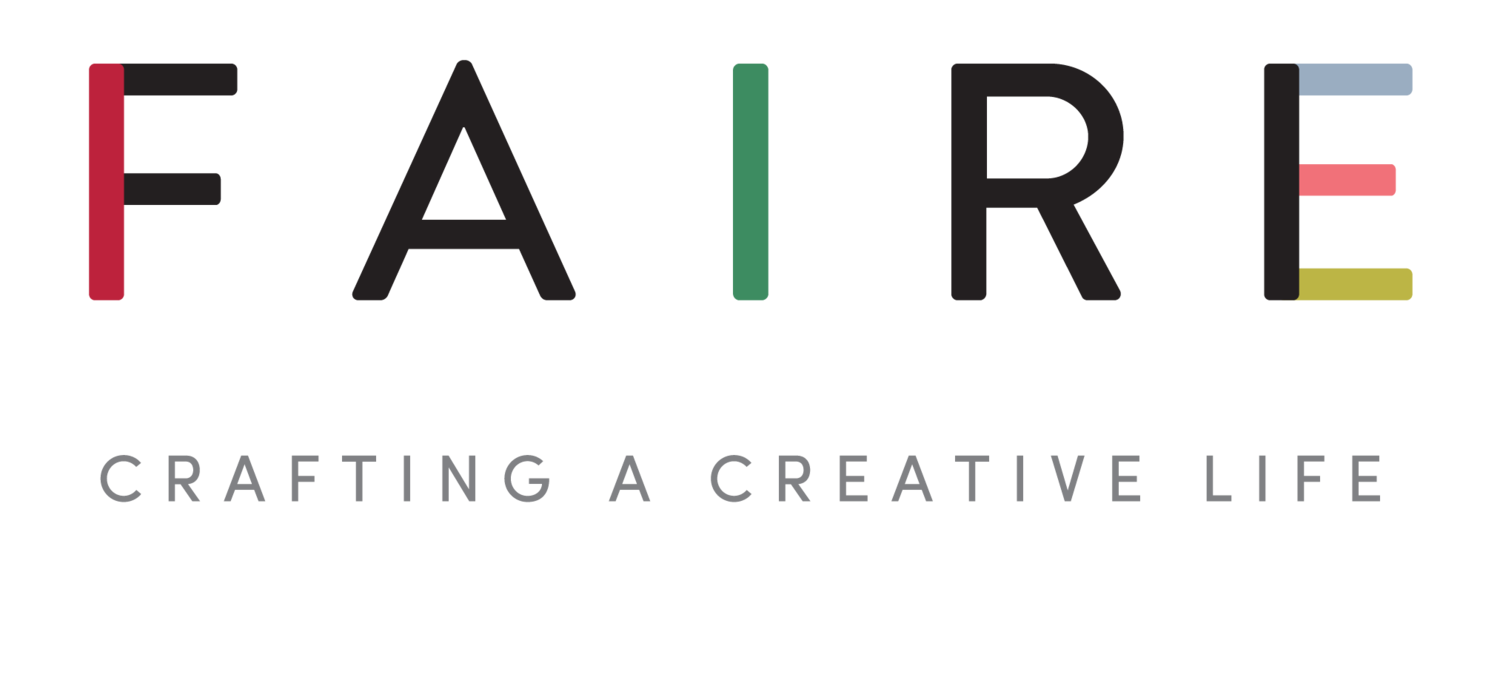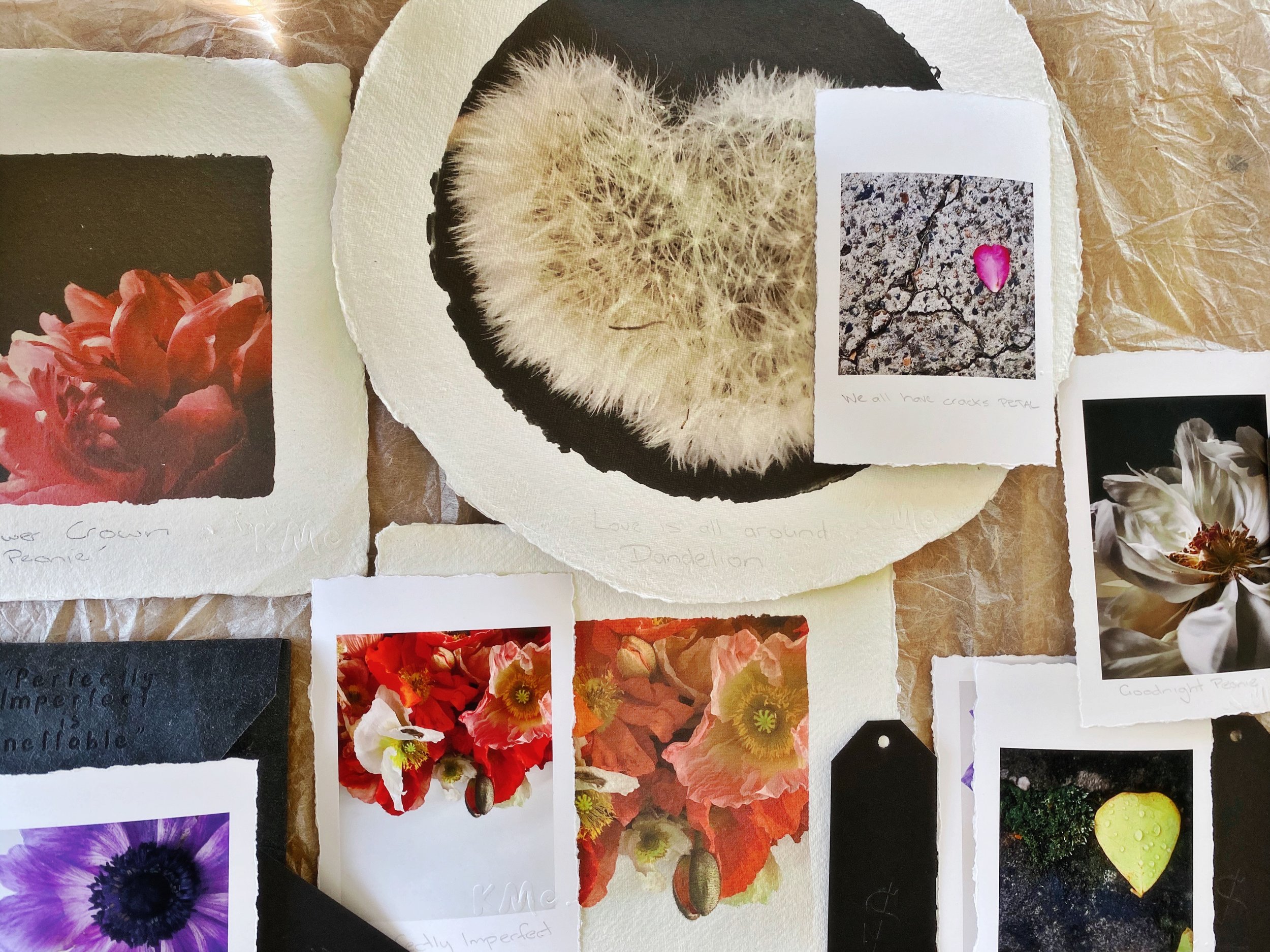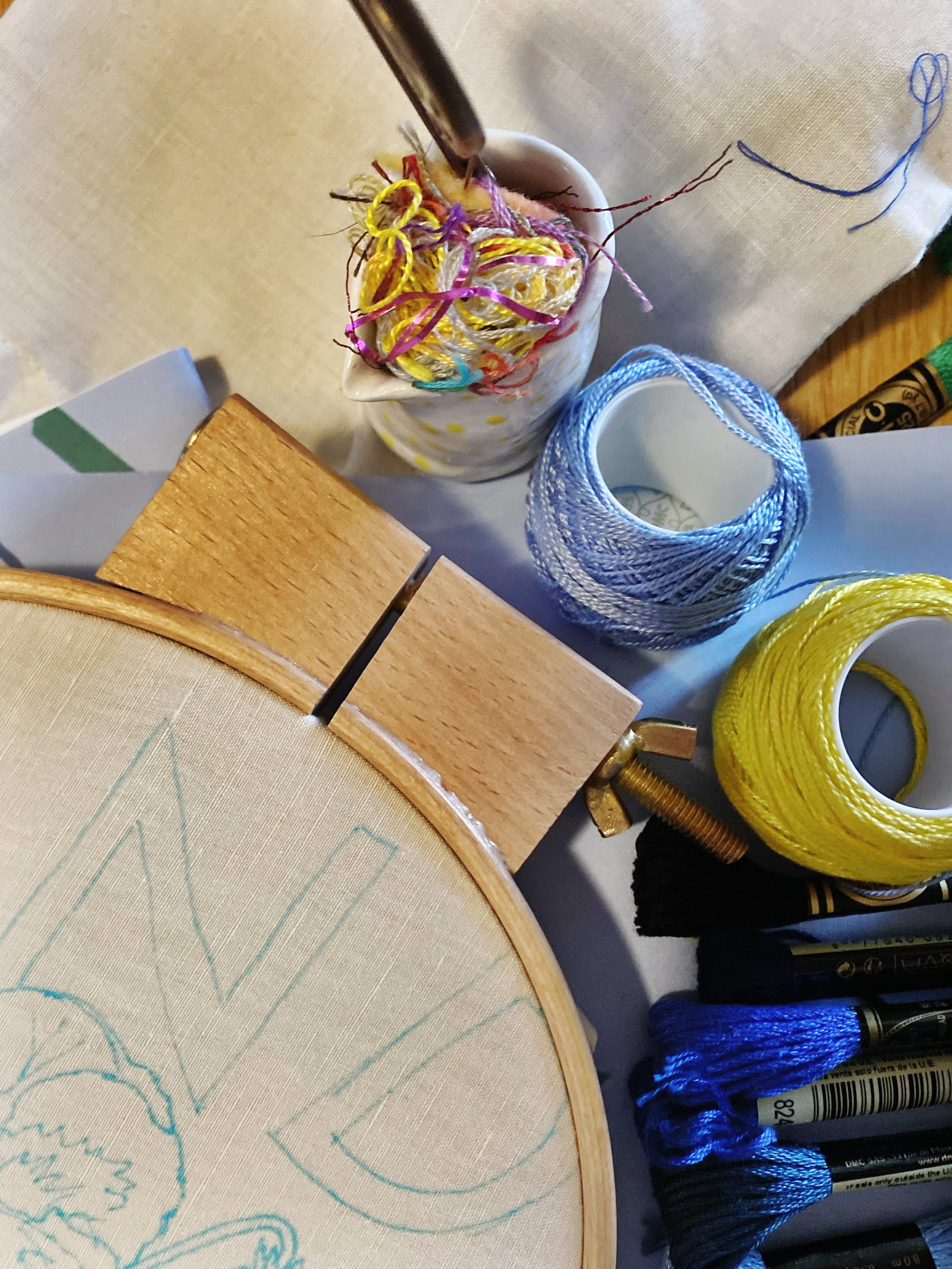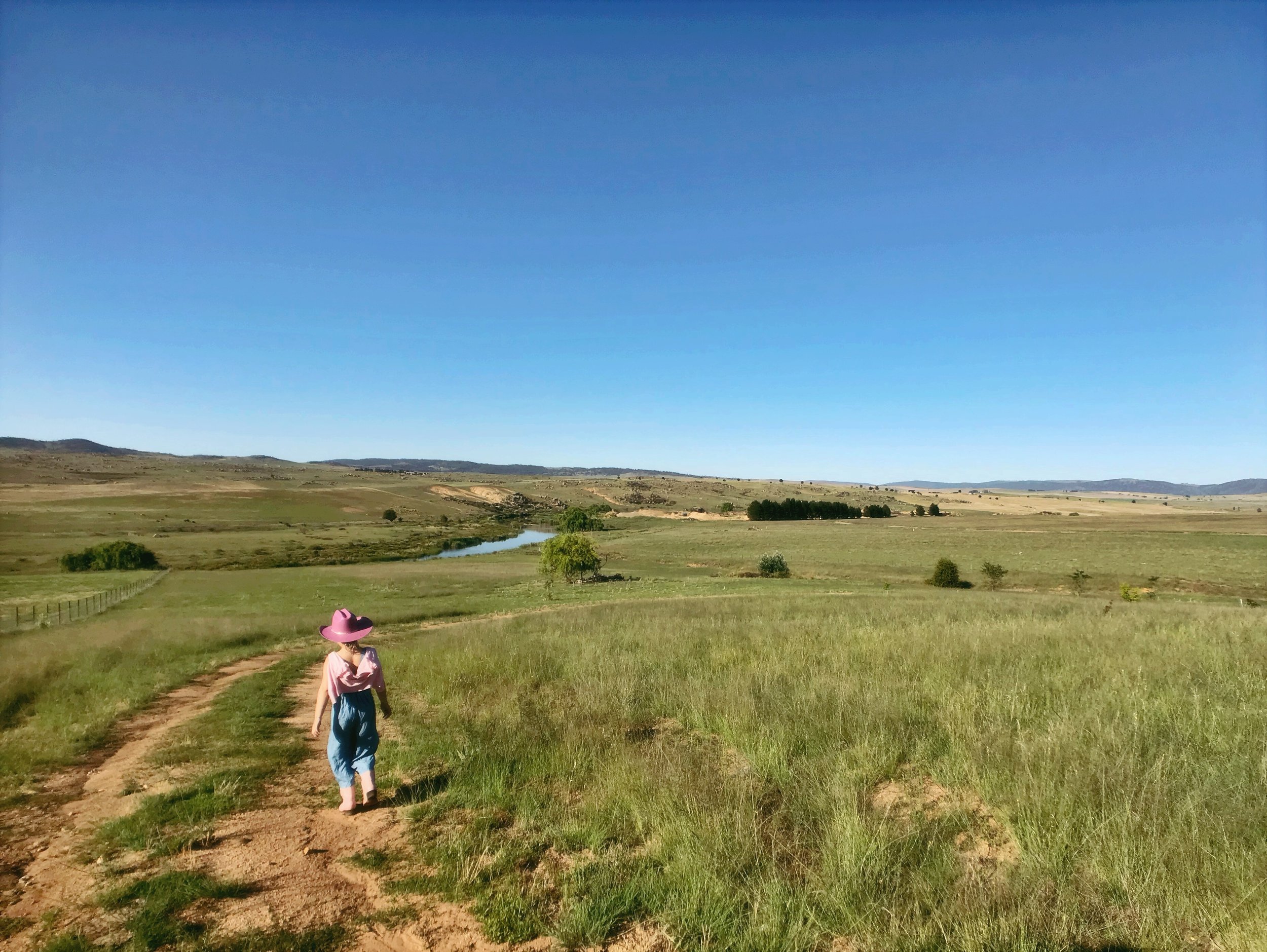Q&A with Kim Mason
Wandering, photographing and stitching fine art creations through the lens of imagination.
Kim Mason grew up in Aotearoa, New Zealand, and has spent her entire working career rushing around in corporate ‘Marketing & Event Agency’ land. Today she lives out in the Australian Snowy Mountains (Ngarigo Country) with her partner & daughter. For many years she did not believe she was creative but she slowly come to find her niche. She creates slowly, taking the time to give each piece its own considered and treasured personality. Her downtime is spent wandering, photographing, and stitching. As she puts it, ‘there are no straight lines in nature. I am put on this earth to share that joy whether that be through capturing what I see through my lens, stitching an artwork, or encouraging all to tread lightly on the earth.’
“There’s significance in creating by hand. Taking the time to lift the joy and craft something slowly. It’s a true head-and-heart connection.”
Faire: Can you tell us a little about yourself? What are your earliest memories of creating?
Kim Mason: I’ve always had an impulse to make, to create something for good, rather than just fulfilling a task. As a Kiwi, growing up in Aotearoa (New Zealand), I was surrounded by nature. My father was a true outdoorsman who always had a camera in his hands. By day, he was a builder who fixed and repaired everything. My mother did every craft known to humankind and was a trained dressmaker. So, unbeknown to me, I was always destined to become a ‘maker’.
Both photography and embroidery require you to be present. Photography captures the spirit of your focus. Embroidery is a slow process and I have the privilege of giving each piece its own considered, treasured personality. In both, a pause is required, there is no ‘instant gratification’.
Today, I live with my partner and daughter in an off-grid, solar-powered home on Ngarigo Country, the Snowy Mountains region of NSW, Australia. Sustainability, treading lightly, purchasing for the planet and slow living are not just about storytelling, it’s our way of life. With the Snowy River rambling through our property, the land provides plenty of inspiration. The front porch is one of my favourite places to simply sit and breathe in the view, no matter what the time of day.
Taking photos and wandering with my daughter is one of my all-time favourite slowdowns. The magic moment of pure joy when a child finds a leaf, or a flower, a feather, or a rock and says with complete wonder ‘Look at this!’… You stop, you pause, and you too see what they see. An interruption worth the lingering pause.
Faire: How would you describe your creative style?
KM: Well, I guess it could be summed up as ‘perfectly imperfect’. There’s nothing perfect about what I do, and that is magnified when taking a photo of a flower, there are no straight lines. The paper I print on is a handmade cotton rag and intentionally textured. The material I source for embroidery is from offcuts, the pen lines whether a child’s drawing or a treasured piece of handwriting is always meandering across the page.
Faire: What informs and inspires your work more generally?
KM: Papatūānuku – mother earth ‘nature’ provides endless inspiration and then the non-negotiable is paying respect to her through the lens of treading lightly, reusing existing materials, making-do, rather than purchasing something new.
I come from a long line of fae believers so there is always a thread of sharing the magic that I see in the ordinary, noticing something that others may walk past, wandering, hunting in awe, and then sending someone a print or embroidery to hang on their wall is a gift of shoy (sharing joy)
Faire: Can you talk a little about the steps in your creative process?
KM: With my photography it’s as simple as seeing something in my garden, getting up close with a macro lens, and capturing something that I see in my mind’s eye. I am lucky to have a photographic printer that prints on handmade paper, this gives the image a different kind of depth as the colour sinks into the paper, it loses its vibrancy but gives it a whole new look and feel.
With the embroidery, I take the drawing or writing and trace directly over it onto the chosen material, which I source from many places. I like to use remnants rather than buy new fabric, it’s a way to reduce and reuse what has already been produced. I then match the thread to the colours of the drawing and then I hand stitch over the drawings. It’s such a privilege to stitch over the lines of someone’s handwriting or drawing…And a little nerve-wracking, whilst my motto is ‘perfectly imperfect’ there does need to be a level of accuracy.
Faire: Can you talk to us about any learnings you have experienced along the way?
KM: The biggest challenge has been overcoming myself, thinking that I wasn’t creative, or that I’m not good enough. I believed for many years - that to be considered creative you had to draw or paint! I’ve spent my entire working career rushing around, producing, leading, and managing people in marketing, PR, and event agency ‘land’. My skill set was project management and logistics, essentially bringing clarity in the midst of chaos. The designers, creative directors, and artists I worked with were the talented ones, not me, I was the organiser. When designing the processes I never thought that I had a creative eye, especially producing all ‘their’ work for the world to see, my role was to sit in the back pulling all the Tetris pieces together. While in my private life, I quietly started slowly embroidering my daughter’s drawings, taking photos of things that bought me joy, noticing the macro details, and then that lead to the sharing of joy for others to see and the commissions came rolling in.
Faire: What have been your biggest challenges with your creative business?
KM: Carving out the time and the distance. This is my ‘cup of joy’ - my ikigai - so given it is a slow process, commissions can take a while to complete. I have a full-time job and we live remotely so there is no ‘next day delivery’ and thankfully people don’t have an expectation to get it quickly.
Faire: How have the worldwide restrictions of COVID-19 impacted your creative business and have you had to adapt or change these last few years?
KM: Well yes for sure, Covid was a huge impact. I was made redundant from my job, it was tough financially, and as a result, I had a lot of spare time, which wasn’t so good for my head space. However, once I started walking through it, sitting in the silence with my own shadows, I was encouraged to put myself out there and open up for commissions and of course, people were more forgiving as the need for instant gratification was a little less of a requirement during the pandemic.
Faire: What has been your biggest accomplishment?
KM: Literally sending images off to print, packaging them up to post to people who have purchased my artworks - both embroidery and prints. I still can’t get my head around the idea that people purchase my art.
Faire: When, where, and how did you learn how to do what you do?
KM: My mother was a dressmaker and taught me to embroider at a very young age, of course, I didn’t pick it up until years later, but it was something instinctive. My father always had a camera at the ready to capture his travels - and I am lucky enough to have a few of those in my collection now. They were the original upcyclers and menders. Over the years I’ve always invested in a good camera, and am mostly self-taught but I have been lucky to have learned from others who kindly shared their skills. It’s taken a lot of practice, practice, practice…and repeat.
Thousands of photographs and hundreds of pieces of thread.
There’s significance in creating by hand.
Taking the time to lift the joy and craft something slowly. It’s a true head-and-heart connection.
To find out more about Kim visit slowstreetdetour.co or follow @slowstreetdetour on Instagram.












